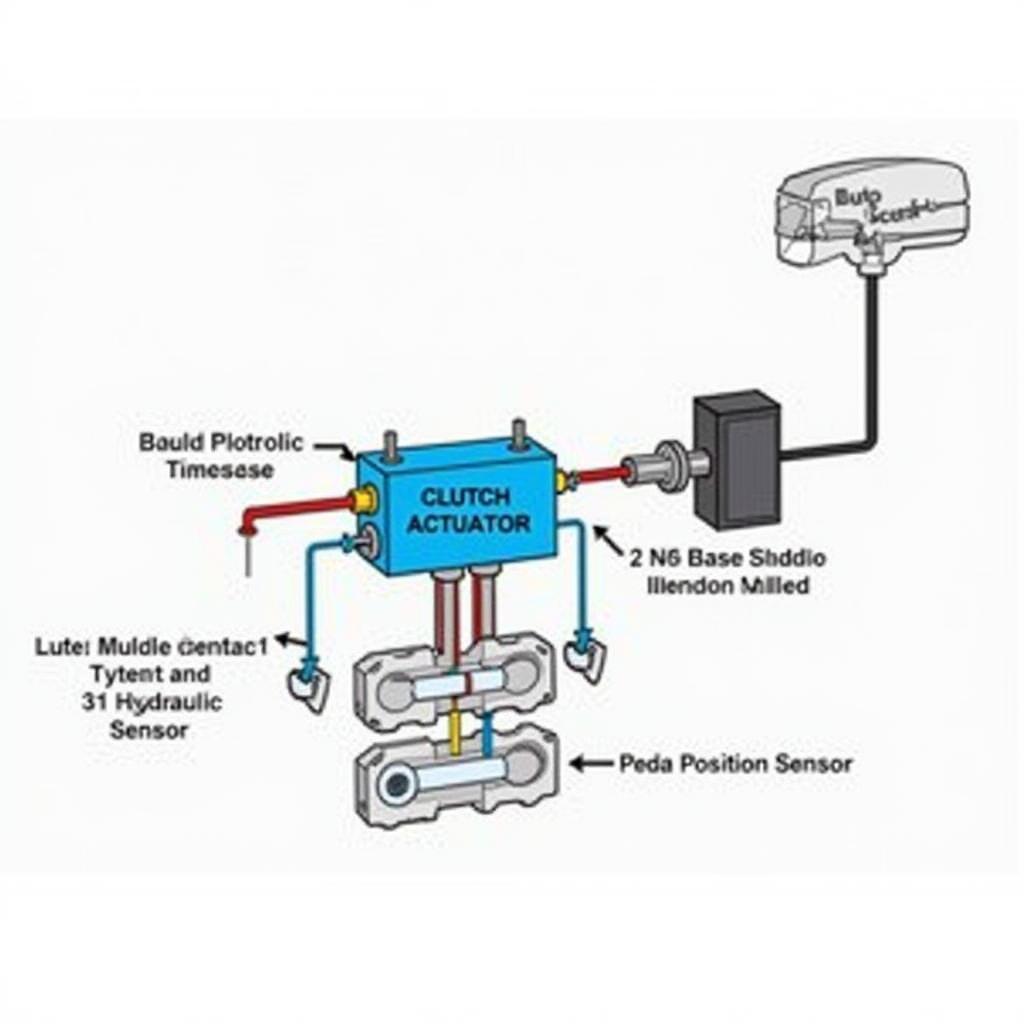The “Warn UM-210-2020 Clutch Brake” message appearing on your dashboard can be alarming. This warning usually indicates an issue with your vehicle’s electro-hydraulic clutch system, specifically the clutch brake. While the exact cause might vary, understanding this system and potential problems is crucial for a swift resolution. This article delves into the intricacies of the “Warn UM-210-2020 Clutch Brake” message, providing a comprehensive guide to help you diagnose, troubleshoot, and potentially fix the issue.
Understanding the Electro-Hydraulic Clutch System
Before diving into the specifics of the UM-210-2020 code, it’s helpful to grasp how your vehicle’s electro-hydraulic clutch system works. Unlike traditional mechanically-operated clutches, this system relies on a combination of electronic sensors, hydraulic actuators, and a control module to engage and disengage the clutch. When you press the clutch pedal, a sensor relays information to the control module, which then commands the hydraulic actuator to apply pressure, disengaging the clutch. When you release the pedal, the process reverses, allowing for gear changes. The clutch brake, a vital component within this system, plays a significant role in ensuring smooth gear changes and preventing premature wear on the clutch.
 Electro-Hydraulic Clutch System Components
Electro-Hydraulic Clutch System Components
Deciphering the Warn UM-210-2020 Clutch Brake Message
The “Warn UM-210-2020 Clutch Brake” message signifies a detected malfunction within the clutch brake system. This could stem from various factors ranging from a simple sensor error to a more serious mechanical fault. The code itself may provide clues about the specific nature of the issue. For instance, it might point to a pressure sensor fault, a hydraulic leak, or a problem with the clutch brake actuator itself.
Common Causes of the UM-210-2020 Warning
Pinpointing the exact cause of the “Warn UM-210-2020 Clutch Brake” message often requires specialized diagnostic equipment. However, some common culprits include:
- Faulty Clutch Brake Actuator: The actuator, responsible for applying and releasing pressure on the clutch, might malfunction due to wear and tear, electrical issues, or internal hydraulic problems.
- Hydraulic Fluid Issues: Low hydraulic fluid levels, often caused by leaks, can disrupt the system’s pressure balance, triggering the warning. Additionally, contaminated or old fluid can degrade system performance.
- Sensor Malfunctions: Malfunctioning sensors, like the clutch position sensor, can send incorrect data to the control module, leading to erroneous warnings and improper clutch operation.
- Wiring or Connector Problems: Corroded connectors, damaged wiring harnesses, or loose connections can disrupt communication within the system, potentially triggering fault codes.
- Control Module Errors: In some cases, the issue might originate from software glitches or faults within the control module itself, requiring reprogramming or replacement.
Troubleshooting the Warn UM-210-2020 Clutch Brake
While professional diagnostics are recommended, here are some basic troubleshooting steps:
- Check Warning Lights: Observe if any other warning lights illuminate on your dashboard alongside the UM-210-2020 message. These additional warnings might provide further clues about the underlying issue.
- Inspect for Visible Damage: Visually examine the clutch system components, focusing on the clutch actuator, hydraulic lines, and connectors, for any signs of leaks, damage, or loose connections.
- Consult Your Vehicle’s Manual: Refer to your owner’s manual for specific information and troubleshooting tips related to your vehicle model and the UM-210-2020 code.
- Use an OBD Scanner: If you have access to an OBD-II scanner, connect it to your vehicle’s diagnostic port to retrieve detailed fault codes and freeze frame data. This information can help narrow down the potential causes and guide further diagnosis.
 Retrieving Diagnostic Information with an OBD-II Scanner
Retrieving Diagnostic Information with an OBD-II Scanner
When to Seek Professional Help
If basic troubleshooting doesn’t resolve the issue, or if you’re uncomfortable working with vehicle electronics and hydraulics, it’s best to consult a qualified automotive electrician specializing in automotive diagnostics and electro-hydraulic clutch systems. They have the expertise, equipment, and access to technical data necessary to accurately diagnose and repair complex issues like the “Warn UM-210-2020 Clutch Brake.”
“When dealing with safety-critical systems like your vehicle’s clutch, it’s always better to err on the side of caution and seek professional help. Attempting DIY repairs without proper knowledge and tools can exacerbate the issue or even pose safety risks.” – John Miller, Automotive Diagnostics Specialist.
The Importance of Timely Repairs
Ignoring the “Warn UM-210-2020 Clutch Brake” message can lead to more severe problems and potentially costly repairs. A faulty clutch brake can cause:
- Premature Clutch Wear: Without a properly functioning clutch brake, the clutch may not engage or disengage smoothly, leading to accelerated wear and premature failure.
- Difficult Gear Changes: You might experience difficulty shifting gears, grinding noises, or a complete inability to change gears if the clutch brake isn’t working correctly.
- Safety Concerns: A malfunctioning clutch can create hazardous driving situations, especially when pulling away from a stop or navigating traffic.
Conclusion
The “Warn UM-210-2020 Clutch Brake” message serves as a vital alert, signaling a potential issue with your vehicle’s electro-hydraulic clutch system. While initial troubleshooting can sometimes pinpoint the cause, consulting a qualified automotive electrician specializing in diagnostics is often the safest and most effective solution. Addressing the issue promptly ensures your vehicle’s smooth operation, prevents further damage, and most importantly, keeps you safe on the road.


